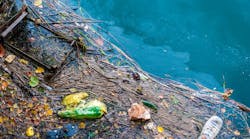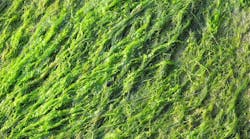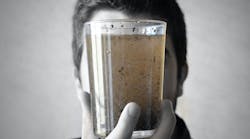Section 303(d) of the Clean Water Act (CWA) requires states to identify water bodies that do not meet the applicable water quality standards and to develop total maximum daily loads (TMDLs) for the pollutants causing the impairment of the water bodies.
The list of these impaired water bodies are publicly available as are the implementation plans for the approved TMDLs for the pollutants of concern. For example, the South Carolina Department of Health and Environmental Control has a list of impaired water bodies for South Carolina and the TMDL implementation plans.
Definition of Total Maximum Daily Load (TMDL)
A total maximum daily load (TMDL) is a calculation of the maximum amount of a pollutant allowed to enter a water body based on applicable water standards. It is given by the following equation:
- TMDL = Σ WLA + Σ LA + MOS
Where:
- Σ WLA: sum of wasteload allocations (WLA) from point sources
- Σ LA: sum of load allocations (LA) from non-point sources
- MOS: margin of safety
The scale of developing the TMDLs is not strictly limited by the CWA or by the EPA’s regulations. Some states have developed TMDLs that cover multiple watersheds rather than each individual watershed. Also while TMDLs have been developed for individual pollutants causing impairment in a waterbody, there are examples where a single TMDL document addresses several pollutants.
Point sources, non-point sources, and the margin of safety
The pollutant for which the TMDL is developed could originate from point or non-point sources. Examples of point sources include wastewater treatment facilities and concentrated animal feeding operations. Other sources of pollutants are non-point sources and they include natural background sources. The margin of safety in the TMDL accounts for predicting how the water quality standards will be met by reducing the level of the pollutant.
TMDL look-up tools
Some states have a website for information on TMDL for a list of pollutants in impaired waterbodies. For example, the New Jersey Department of Environmental Protection has a TMDL look-up tool website for information on municipal separate storm sewer systems (MS4). It provides TMDL information for mercury, total phosphorus, dissolved oxygen, and total suspended solids for waterbodies in various municipalities. The information is useful for regulatory measures pursuant to the New Jersey NPDES program and also for non-regulatory measures for best management practices.
Who is responsible for developing the TMDLs?
States are responsible for developing the TMDLs for their impaired waterbodies and submitting them to the EPA for review and approval. Even when other parties are involved in assisting the state to develop the TMDLs, the state is still responsible for submitting the TMDLs to the EPA.
How are TMDLs developed?
TMDLs are developed using a range of techniques and various factors are also considered. The techniques could range from simple mass balance calculations to complex approaches such as water quality modeling. The pollutants causing the impairment, the type of waterbody impaired, and the chemical conditions of the flow are the basic factors.
There are five steps involved in developing TMDLs:
- Identify and select the pollutant(s) that is causing the water impairment.
- Estimate the loading capacity of the impaired water.
- Estimate the load of the selected pollutant from all sources into the impaired water body.
- Identify ways to reduce the pollutant load.
- Use the margin of safety to allocate the acceptable pollutant load to achieve the applicable water quality standards.
The above steps not only calculate the TMDL (according to the equation), they also identify the links between the impaired water body, the pollutant causing the impairment, and the required reduction in the pollutant load to meet the pertaining water quality standards.
The process for submission and implementation of the TMDLs
The TMDL document should be prepared according to the EPA’s guidelines prior to submission to the EPA. This document should include the following checklist:
- Identification of the pollutant of concern, its source, its priority ranking based on applicable regulations, and the type of water body affected due to the pollutant;
- Load allocations and margin of safety in regard to the pollutant;
- Applicable water quality standards;
- How the public could participate in the TMDL development; and
- Monitoring plans to track the effectiveness of the proposed implementation of the TMDL.
The EPA approves or disapproves the submitted TMDLs after reviewing them (Figure 1). If it is disapproved, a replacement TMDL must be developed.
TMDL wasteload allocations for point source pollutants are implemented through the EPA’s National Pollutant Discharge Elimination System (NPDES) permits pursuant to CWA section 402. For non-point source pollutants, TMDLs are implemented though various programs including incentive-based programs, including those funded by the EPA.
What is a TMDL implementation plan?
The TMDL implementation plan refers to the subsequent actions, after EPA’s approval of the TMDL submission, to reduce the load of the pollutant of concern in the water body to adhere to the applicable water quality standards. In simple terms, it is the actions that would be taken to control the pollutant’s level to maintain the water quality in the affected water body.
The relationship between TMDLs and NPDES permits
The TMDL writer identifies WLAs for point source, load and reserve allocations, and the margin of safety. These WLAs are used by the NPDES permit writer to develop the limits in the NPDES permits.
Generally, this is not always a clear-cut process. The WLAs are required to be expressed in NPDES permits as mass-based water quality-based effluent limits (WQBELs) or in terms other than mass-based depending on the applicable standards for the pollutants as in 40 CFR 122.44 to 122.45.
What is an example of TMDL implementation plans?
The 2019 TMDL implementation plan for the City of Milwaukie, Oregon included identifying the management strategies to achieve load allocations and to reduce pollutant loading. It included WLAs for bacteria, DDT, dieldrin, and mercury that are implemented through the NPDES MS4 permit.
In Texas, the TMDLs are developed by personnels at the Texas Commission on Environmental Quality (TCEQ) in cooperation with other agencies or with approved independent contractors or organizations. TCEQ is responsible for the implementation of all the EPA-approved TMDLs. The implementation plan, supported by funds from the state and private parties, includes community participation.
For example, cities could control the pollutant run-off from storm water, farmers could use methods to decrease pollutant run-off, and the wastewater treatment facilities could commit to reduce the amount of the pollutant in their discharges. Stakeholders meet periodically to measure the progress of the implementation plan and to determine if revisions are required.
Summary of TMDL
In summary, TMDLs numerically identify the maximum amount of a pollutant allowed in a water body and they must be developed by states pursuant to the CWA regulations. Developing TMDLs and implementing the EPA-approved TMDL plans is a multi-collaboration task involving TMDL writers, NPDES permit writers, and also the public. It is also an incentive for wastewater treatment plants to implement their best management practices and technologies to manage pollutants so to adhere to the applicable water quality standards.








